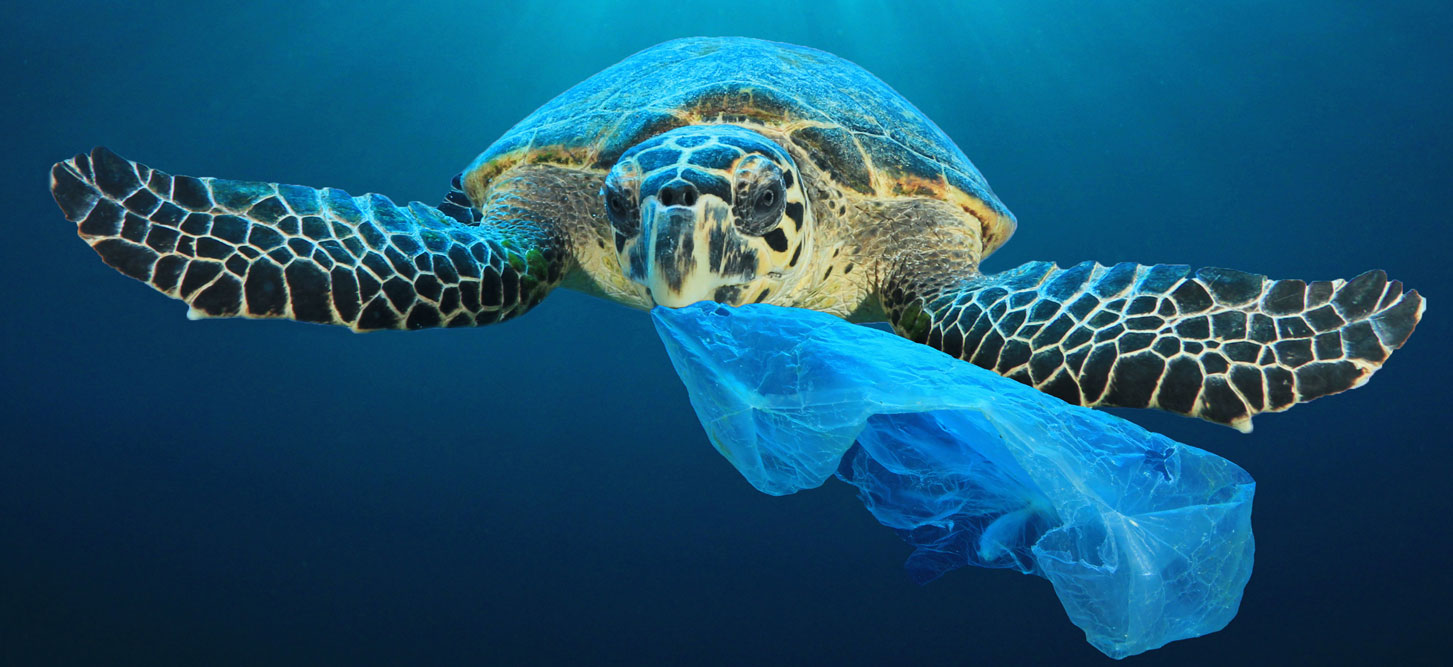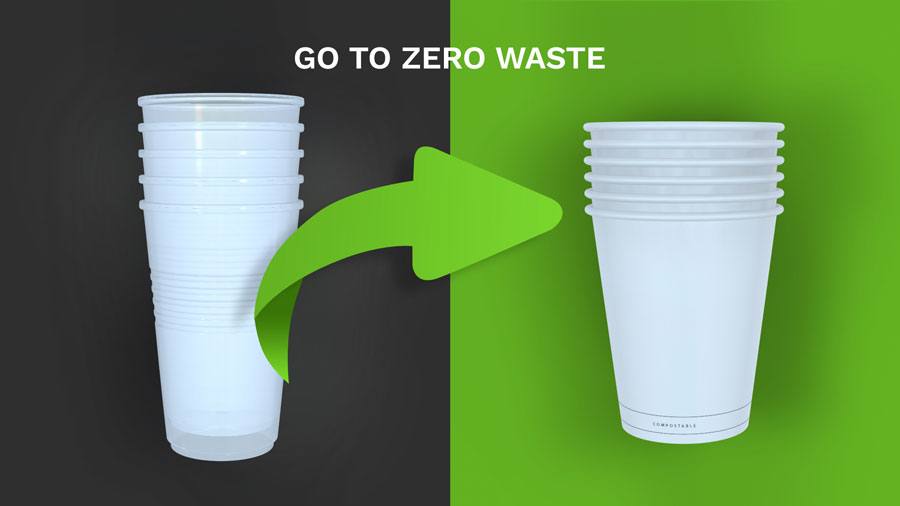 ← retour
← retour
Later this year, Canada will finalize bans on six types of single-use plastic products: plastic grocery bags, straws, stir sticks, six-pack rings, cutler, and food take-out containers.
According to a report by the Ellen MacArthur Foundation [GM1] — a UK-based charity that promotes a global circular economy — the amount of dumped plastic in our oceans could quadruple to 600 million tonnes by 2040 if the world doesn’t take steps to curb the use of plastic. That’s led Canada and many other countries to ban or reduce the use of disposable products such as single-use plastic items.
To further illustrate the need for a more sustainable approach, let’s dive deeper into how Canadians use plastic. Before steps were taken to reduce plastic use, Canadians were using about 15 billion plastic bags a year and 57 million straws per day while throwing out 3 million tonnes of plastic waste per year, with only 9% of that total getting recycled. All of that plastic waste filled up landfills and clogged Canada’s waterways, raising the risk of long-term environmental damage.
If those levels of waste sound like a lot, consider that Canada’s total population is only about 38 million, and that Canadians were more committed to reducing, reusing, and recycling than many other nations even before the single-use plastic ban ever got announced. Now consider countries like China and India, which have a combined population of nearly 3 billion people, and an insatiable quest for economic growth. That’s how you get to unfathomably massive projections such as 600 million tonnes of plastic garbage in the world’s oceans.

The good news is that Canada is hardly alone in its recently heightened efforts to reduce waste and push for a greener, less wasteful planet. In 2019, 170 nations signed a United Nations resolution to significantly reduce the use of plastics by 2030.
As with many agreements that aim to address the world’s growing environmental challenges, this resolution ended up being weaker than many world leaders had hoped. An initial proposal called for every country to phase out single-use plastic by 2025, a goal that seemed reasonable given that Canada is on track to do so four years earlier than that. Unfortunately several nations objected, with the United States being one of that plan’s [GM3] biggest opponents. (There is hope that newly-elected President Joe Biden will push more progressive climate-related policy than his predecessor did.)
The World Economic Forum’s Global Plastic Action Partnership is one of numerous public-private partnerships that aims to save landfills, oceans, and other waterways from getting overwhelmed by plastic waste. Also, when you go country by country, you can see that many world governments think our wasteful habits should change, even if the pace of that change remains a controversial topic.
One of the most progressive jurisdictions has been the European Union, with the EU announcing that it planned to ban single-use plastic items such as straws, forks, and cups later this year.
The United Kingdom also cracked down on plastic waste, instituting some of the most aggressive steps to address the problem. The UK introduced a tax on plastic bags in 2015, and banned the sales of products containing environmentally damaging microbeads in 2018.
China and India have also stepped up. China banned all single-use straws in its restaurants last year, and plans to ban non-degradable bags in all cities and towns by 2022. India has resisted pressure to ban single-use plastics, but has taken smaller steps to enforce rules on how single-use plastics are stored and manufactured.
Even the stubborn environmental policies shown by the U.S. under the Trump administration had dissenters, as progressive states such as New York, California, and Hawaii banned single-use plastic bags.
More changes are coming. Traditional paper coffee cups can’t be recycled, because they’re coated in plastic. Numerous places have taken action to ban or curb the use of those wasteful products: The Netherlands announced a total ban on plastic-coated paper cups starting in July of this year, while the eco-friendly mecca of Berkeley, California last year started requiring coffee shops to charge an extra 25 cents per cup.
One of the best ways to build a circular economy is to offer strong alternatives to environmentally damaging products.
Think of the world’s efforts to reduce harmful emissions from the combustion engines in cars. For a long time, many people wanted their cars to be less damaging to the environment. But electric cars were rare, had limited driving range, and were ugly.
Enter Elon Musk and his company, Tesla. Musk set out to build a new kind of electric car, one that would feature all kinds of cool technology, longer battery life and driving range, and eye-catching designs. Suddenly the thought of making the environmentally conscious choice became not just possible. It was even…cool.
In a similar vein, the world needs easy-to-use, stylish alternatives to disposable products, specifically single-use plastic items

Life In Green heavily invests in new technologies that enable us to produce items ranging from cups to lids to accessories that are made from compostable materials, come from renewable resources, and lack wasteful add-ons such as the plastic coatings on paper coffee cups.
That’s not all. When we partner with clients, we don’t just provide them with compostable products; we give detailed instructions on how to compost those cups, lids, and other items, including information on the nearest composting facilities.
As we keep progressing, we will look for new ways to reduce waste, consume fewer non-renewable resources, and generally help protect the planet. Sustainability and innovation very much go hand in hand.
While we always pay attention to function, we also recognize the importance of form. Just as electric car adoption needs sweeteners to happen, so too does purchasing and using eco-friendly cups, lids, plates, and bowls. That’s why Life In Green products are also eye-catching, whether it’s our standard products or private-label designs.
We also work hard to make our products affordable. That means that our clients can go green without having to break the bank. Even in the midst of a global pandemic that’s sent the cost of raw materials sky-high, our efficient operations enable us to keep prices contained more effectively than our competitors have.
That way, as all of us look for ways to be kinder to our planet, Life In Green can make ethical choices more affordable and more enjoyable.